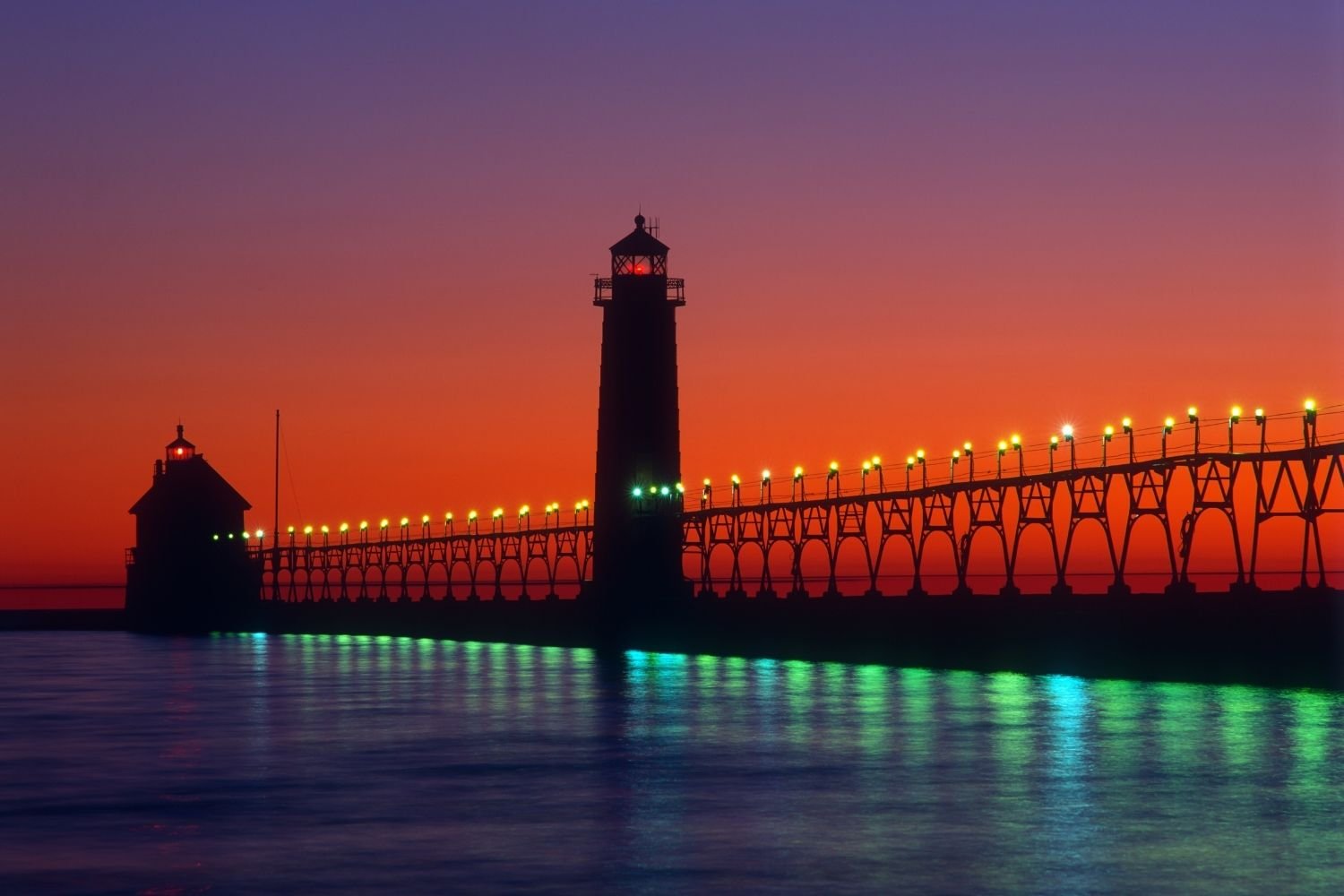

After it was sunk by a U-boat of Nazi Germany's Kriegsmarine, the citizens of Grand Haven raised more than $1,000,000 in bonds to build a replacement cutter bearing the same name several pieces of wreckage remain displayed on the city's waterfront. The Coast Guard cutter Escanaba was based in the city until the Second World War. Grand Haven is home to the United States Coast Guard's " Sector Field Office Grand Haven." The first Coast Guard presence in the city was in 1924. The waterfront locations bring tourists from all over the state and region for activities which include, boating, sailing, jet skiing, tubing, and wind surfing. In addition, the city features a ski park (Mulligan's Hollow Ski Bowl) and a skate park. The state park also includes a campground on Lake Michigan, near the pier and lighthouses. Grand Haven State Park contains beaches which, in summer, water temperatures reach the low 70s☏ (2013 had 19 days in the 70s), bringing tens of thousands of visitors as a boon to the local economy. Grand Rapidians regularly visit to take advantage of the close proximity to the Lake Michigan beaches, State campgrounds, restaurants, bars, attractions with many even owning cottages in the area as their home away from home. Grand Haven is a destination point for residents of inland cities of West Michigan, as well as many from the other side of the state. The city has over 100 miles (160 km) of bike trails, a state beach, boardwalk, two lighthouses, a pier, wharf, large charter fishing fleet and a Great Lakes port, where it imports limestone, slag, cement and coal while exporting sand. along with connecting campgrounds and recreational areas. The Grand Haven port community is an active beach resort with boating, fishing, sailing, biking, skating etc. George "Baby Face" Nelson and Homer Van Meter, who became notorious 1930s criminals, committed their first bank robbery at a Grand Haven bank. They are connected by a lighted catwalk, which runs along the pier to the shore.

The current lighthouses, painted red, were built in 1875 ( outer light) and 1905 ( inner). Given the importance of shipping and water trade to the city, the Grand Haven Lighthouses were built in 1839 on the south pier, to mark the most navigable channel into the river. In August 2006, Eagle-Ottawa Leather Co., which developed from the 1838 Sheldon Tannery, announced it would close its local operations that year. The smokestack at the piano factory collapsed during the Southern Great Lakes Derecho of 1998. The Story and Clark Piano Company built pianos in the city from 1900 to 1984. Its depot and offices have been adapted for use as a historical museum.

The city was served by the Grand Trunk Railway, which ran along the waterfront near the river. In the mid-to-late 19th century, Grand Haven developed as a logging, lumber mill and shipping town, as well as a shipbuilding center. He also started a school, Ferry Elementary, which continues to operate. Ferry founded the city's first bank in 1851 in the Ferry & Son building on Harbor Drive. Sheldon Tannery was founded in 1838, developing to process leathers from the fur trade and cattle. Residents named the town as "Grand Haven" in 1835. The first permanent resident was a Presbyterian minister, William Montague Ferry, who founded in 1834 the first area church. Panoramic map of Grand View in 1868 with list of landmarksĪfter the War of 1812, this area became more settled by Americans. A fur trading outpost called Gabagouache was first established by Madeline La Framboise and her husband Joseph. The city dates its European-American founding to French colonial settlers. Some of the long culture of the Ottawa tribe is being revealed through the excavation of archeological artifacts. The Potawatomi and Ottawa Native Americans lived in the area for centuries and used the river as a trade route into the interior of Michigan. The city is home to the Grand Haven Memorial Airpark (3GM) and is located just north of Grand Haven Charter Township. It is part of the Grand Rapids Metropolitan Area, which had a population of 1,027,703 in 2014.

As of the 2010 census, Grand Haven had a population of 10,412. Grand Haven is located on the eastern shore of Lake Michigan at the mouth of the Grand River, for which it is named. state of Michigan and the county seat of Ottawa County.


 0 kommentar(er)
0 kommentar(er)
